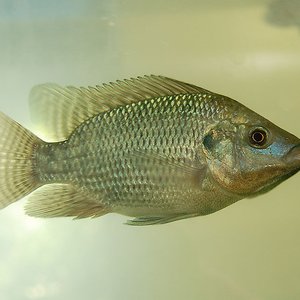Aquaculture comes of age
Each year, more than 160 million tonnes of fish are consumed by the world’s population. Almost half of this volume is produced in controlled environments, where the fish is cultured rather than harvested from the wild. The system, known as aquaculture, dates back thousands of years, and today operates as a welcome alternative to the sea’s over-exploited natural resources. A recent workshop hosted by the Reprofish and AquaBreeding projects (funded by the European Union at a total of EUR 383,014) highlighted the efforts in place to enhance industry practices and improve the quality of aquatic animals and fish reared in
Although the Food and Agriculture Organization of the United Nations (FAO) asserts that aquaculture is probably the fastest growing food-producing sector today, it is certainly not the newest (fish farming was pioneered by the Egyptians and Chinese around 2 500 BC). It is, nevertheless, one of the most promising answers to a world population that continues to grow and that, subsequently, places increasing pressure on the planet’s food sources.
'Most of the fish that people eat nowadays in many European restaurants come from the aquaculture industry,' explained Dr Olivier Kah, coordinator of Reprofish, a project funded by the Sixth Framework Programme (FP6) aimed at better understanding, accessing and communicating fish reproduction research.
'Aquaculture is important because it is another way to provide the public and the market with valuable proteins that we would otherwise need to get from the ocean. Products from the sea have a very high nutritional value, are highly recommended by medical bodies in terms of health and preventing heart disease,' said Dr Kah. Additionally, he noted, due to the current reality of over-fishing, pollution and global warming, culturing species will be called upon increasingly in the future as a way to save aquatic animals from becoming endangered.
As one of the key actions of the Reprofish project, Dr Kah inaugurated a three-day workshop held earlier this month which brought together European scientists and industry stakeholders (including hatchery managers and fish breeders) to present an overview of the most important knowledge on fish reproduction as well as its industrial application. The emphasis of the exchange was to determine potential research gaps and priorities in this area in order to inform future strategy for some of the species farmed in Europe, such as rainbow trout, common carp, sea bass, sea bream, turbot and salmon (
'Reproduction is life,' said Dr Kah. 'If animals do not reproduce it is the end of the chain. It is a very complex function that involves a lot of internal factors — from an organism and interactions within an organism to input from the environment (such as temperature) — which help the organism decide whether it will reproduce or not. This is what we are trying to understand; why a fish starts reproducing, how we can control this mechanism, how we can master it, and use this knowledge to culture fish.'
Logically, if reproduction represents the biological function, breeding is a complimentary activity that denotes choice in the mating selection of animals to achieve specific objectives, such as improving quality traits, welfare traits and disease-resistance, explained Dr Hervé Chavanne, coordinator of AquaBreeding, a project also funded under FP6 and co-host of the industry workshop.
One of the questions that underlies any breeding programme is how an animal should be chosen — a consideration that is made for all major mammals that are reared in the world, pointed out Dr Chavanne. 'A breeding programme has to be implemented to permit the animals that are produced in the system to be adapted to the requests, let’s say, of the producer but also — and always more so — of the consumer.'
Europe’s first aquaculture breeding programme took place relatively recently, in
The workshop represented the final key deliverable for the two-year AquaBreeding project. Among its objectives was to help integrate the research priorities and vision of European aquaculture breeding stakeholders into two European Technology Platforms – Farm Animal Breeding and Reproduction Technology Platform (FABRE-TP) and European Aquaculture Technology Platform (EA-TP). [Source: Europa]







